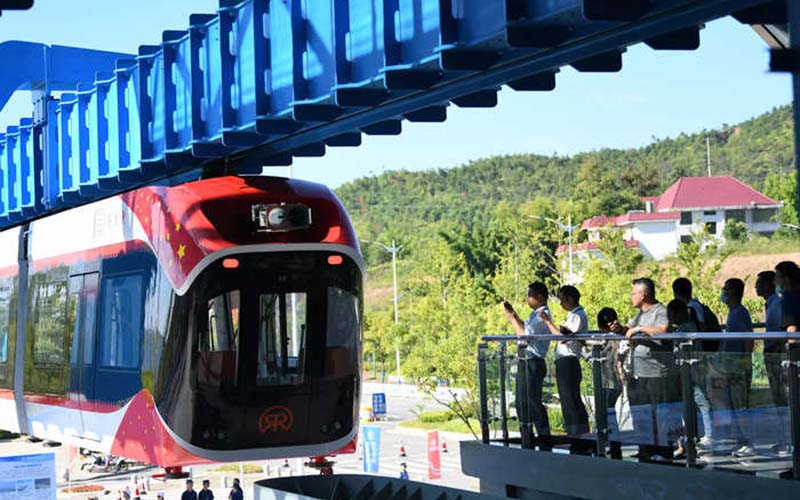China is again in the news, but for good reasons this time, thanks to its futuristic architecture in the form of maglev trains. These high-speed trains, also called Red Rail, are designed to run electromagnetic over the tracks. The country recently initiated the release of its first suspended maglev line built with permanently strong magnets that produce a non-stop repelling force, strong enough to lift a train into thin air.
China’s futuristic air train
is set to take off on the experimental 2600 ft track in Xingguo County, Jiangxi province.
The pictures of the sky train have gone viral on social media with instant hits and views the moment it was shared. The capacity of the train is around 88 passengers in one go. The elevated rail speeds past about 33 feet above the ground level with no physical contact with the rail track as the train moves beneath it silently, touching speeds of up to 50 mph that will gradually even touch 75 mph. Accordingly to some sources in Jiangxi University of Science and Technology, there have been reports that the electromagnetic radiation created by the track and the cheaper built cost prompted a fascinating idea to be given life.
The local transport authorities are testing the Red Rail across half a mail stretch in Xingguo County but want to extend this to 4.7 miles if the initial tests are completed successfully.
Suggested Read: Explore The Best Of Hong Kong In 48 Hours
Maglev trains use permanent magnets to life carriages above the rail track that eliminates the need for wheels, thereby reducing any friction incidences that contribute to a much silent and faster rail service. In fact, this train’s speed is far beyond a conventional train’s expectations. The use of electromagnets also brings in the usage of small amounts of electricity required to provide the initial thrust and propel the train.
China’s abundance of rare earth elements that are required to make permanent magnets used in traditional trains helps it to source it locally and bring down the resource cost significantly low, which is among the key reasons why this technology’s success is possible to some degree. In addition, using these rare earth elements greatly impacts the overall product’s lifespan. For example, Neodymium, one of the rare earth metals, can significantly reduce magnetism loss by approximately 5% in a century.
China, in fact, contributes to 40% of the global reserves of uncommon earth elements, and in addition, it also mines these metals more than any other global nation covering almost 85% of the global refined rare earth in the year 2020. With its reduced electromagnetic radiation, China also aims to protect the environment and improve the health of the people residing in nearby areas. It’s time to celebrate this great first step toward a brighter and futuristic world.
Image Credit: www.businessinsider.in


